
| Dig in! Exploring Cooking Mechanics in Games | ||
| Every day this week, Game Developer is serving up a feast of interviews, deep dives, and more digging into the evolution of Cooking in video games. | ||
| Browse Latest Articles | Submit your Blog | |
Welcome to Cooking Week!
From June 3 through June 7, we will be examining the cooking game genre and exploring what developers can learn and apply to their own delicious side dishes.
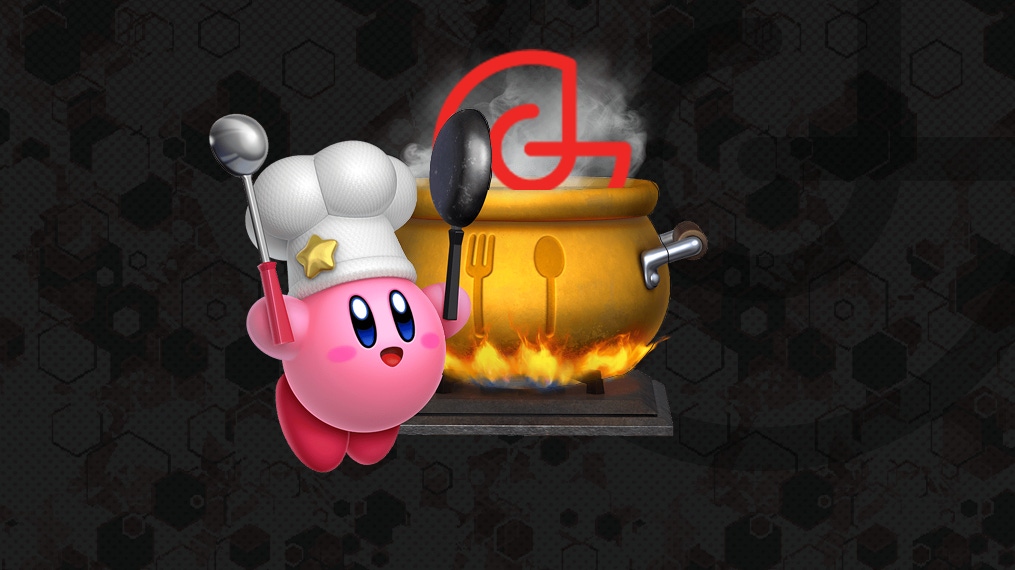
Food and cooking mechanics have a long history in video games, evolving from health power-ups to sidequest and mini-games and eventually into a creative pillar holding up entire genres. As we start out our week focusing on cooking games and restaurant simulators, let’s examine some of the most popular themes across the genre and explore what developers can learn and apply to their own delicious side dishes.
Some of the earliest uses of food in video games come from the classics; in Pac-Man (1980), we saw fruit used to award points based on how long the player could survive in a level. In Burgertime (1982), food preparation is at the core of a challenge rooted in skill, with players stacking different ingredients like lettuce and tomato to assemble a hamburger. In games like Gauntlet (1985), large chunks of meat are used in health restoration, inspiring the classic and oft-quoted line: “Warrior needs food badly.” Whatever the era in gaming, food and cooking have served many design goals.
As games grew in complexity, so did our context for the use of food, leading eventually to games that allowed you not to just eat but to cook. Among the earliest were games like the Cooking Mama (2006) on the Nintendo DS, which simplified the process of cooking down to easy visual steps and used the device’s second screen touchpad to mimic techniques like slicing or chopping vegetables. Another, 2012’s Cook, Serve, Delicious! (based on the 1999 PlayStation title Ore no Ryouri, which we explore in an interview with developer David Galindo later this week) used cooking as more of a concept, focusing on quick time button sequences to mimic the preparation and assemblage of a dish.
In the years since open-world survival games have risen in popularity, so too has the concept of in-game cooking. It can be seen as a staple in games as broad as Don’t Starve (2013) to The Legend of Zelda: Breath of the Wild, with a wide range in complexity. Some cooking games focus on gameifying the techniques of cooking. Others focus on the utility of food, like power-ups or health items while others still use it to reinforce a game’s crafting systems, adding an element of worldbuilding by teaching the player the regional flora and fauna.
Why does cooking in games appeal to us, both as players and game makers, so much? Well, on the more obvious side, human beings have evolved to take cues about a food’s texture, flavor, and freshness from its appearance, and our appetites rely on that appeal. Think of the entire industries that have sprung up around food plating and presentation, be it the factory that manufactures food models for restaurant displays or fancy Michelin-starred restaurants that incorporate elements of traditional visual arts into each dish. What we see is a big part of enjoying what we eat.
This visual aspect combined with personal tastes can also turn cooking into a mode of self-expression. What we cook is a reflection of our skills, our opinions, our resources, and our history. As with other art forms, the joy is as much in its creation as the final product. (This topic is evoked briefly in our upcoming interview with the developers of TapBlaze later this week, “Good Pizza, Great Pizza would not exist if not for Costco.”)
But there are many themes that cooking touches on, each speaking to its different roles. Cooking is a part of our everyday lives, a symbol of routine, stability, even boredom. It’s also a part of our special occasions, our holidays and family gatherings: times that call for scarce ingredients and hours of tedious but worthwhile labor. With that in mind, here are some of the themes, mechanics, and stories we'll explore in full this week.
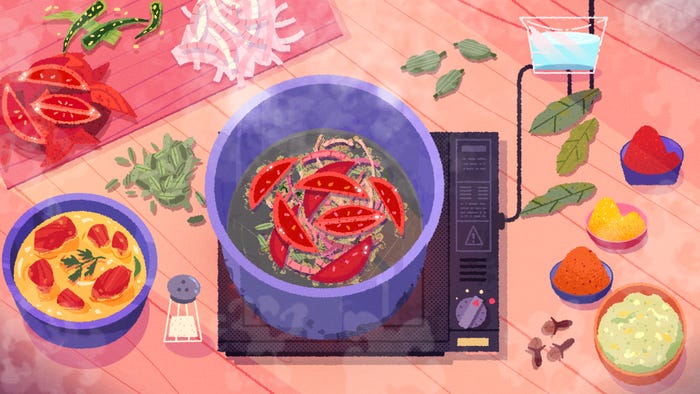
Image via Visai Games.
Food, family and heritage
Venba is a strong recent example of a game that depicts the complicated intersection of cooking and family, touching on racism, identity, and parental sacrifice while walking us through a trial-and-error process that reinforces the procedure of certain techniques in Tamil cooking. On top of crafting game mechanics out of dishes and cooking equipment unique to Indian cuisine, Venba also gave opportunities for the player to think about why we cook, and the emotions that are poured into the act of service, whether we’re connecting with our roots or sacrificing our time and energy for the benefit of someone we love.
One title that more directly attempts to educate players about a culture is the upcoming Rooster, a point-and-click adventure game that celebrates Chinese culture through its visual style, music and ancillary features like papercrafting and cooking. Developer Deborah Chantson opined on this topic in “The Upside of Using Culture and Personal Stories as Game Pillars” earlier this year, discussing the merits of using personal heritage in game design.
Another game to take this approach is Cacao Café, which replicates the agricultural and culinary practices around the production of chocolate in ancient Mexica culture. We discuss this more in the article, “Exploring ancient Mexica culture through cooking in Cacao Café” later this week.
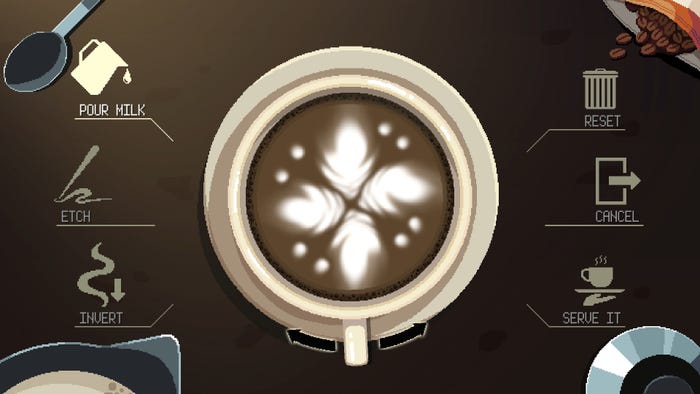
Coffee Talk also bears an element of self-expression, allowing players to create foam art on the drinks they serve to customers. Image via Toge Productions.
Food, community and socializing
Community can be many things, but the act of communing itself is well depicted within games, where service and hospitality often play a key part not only in our perception of this act but our role within it. In Coffee Talk, the player is a barista whose job is in part that of a confidante, similar to that of the bartender in games like VA-11 HALL-A. As you listen to a customer’s story and pour them a coffee, there’s a lovely mirror between the thought and care put into actively listening to them and the drink you make based on their verbal tip-offs and emotional cues.
Other games use cooking to reflect relationships in other ways; take for example Pokémon Sword and Shield, which let the player set up camp and make curry for their Pokémon, choosing different ingredients based on the strengths of their team to build stronger friendships, in turn giving the player a superior edge in battle.
Another aspect explored in food and community is its role in socializing. One dish that shows up in many indie games is hot pot, traditionally a meal that is served for a group of people, becoming a metaphor about the unique stresses of eating as a group, as seen in games like Hot Pot Panic. This is somewhat subverted in Hot Pot for One, which depicts the loneliness of being an ex-pat in a new city by walking players through the sad experience of having all the ingredients for a social dinner, and not enough friends to share it with.
This topic is explored more this week in the Q&A, “Why Arctic Eggs are a dish best served cold”, where developer Keven Brown discusses why they chose to create a game that reflects more on the social aspects of eating and cooking than the technical logistics, and what it says about the utility of eating versus the camaraderie of its creation. It is also warmly dissected in our upcoming Featured Blog from senior editor Bryant Francis, entitled “Strategy games like Against the Storm let us think about the bigger picture of cooking,” similarly reminiscing about the value placed on food outside of its immediate necessity, and how Against the Storm supports that through its design.
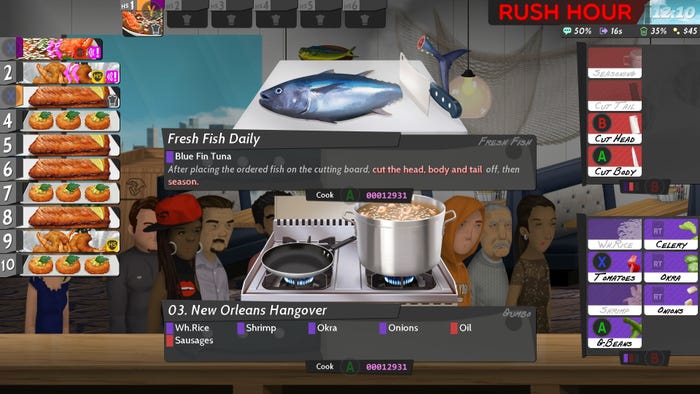
In Cook, Serve, Delicious! 2, players manage not only incoming orders but the janitorial and kitchen responsibilities of running a restaurant, too. Image via Vertigo Gaming Inc.
Cooking and performance anxiety
At the other end of the spectrum are the games where the focus is timing, performance and successful execution of a specific skill. There are many series that model this by combining a light facsimile of actual food preparation with the frenzy of fast-paced restaurants, sometimes contextualized as a simulation (like Chef Life: A Restaurant Simulator, whose developers shared with us their formula for achieving that balance in 2023). Sacrificing authenticity for simplicity, these games center on customer service, challenging players to master timing as each ingredient is prepped, cooked, plated, and served.
Interesting to note that it’s often the addition of selling labor that adds the element of stress; whereas Venba or the cat cafe game Calico evoke comfort and safety, restaurant and food prep sims like Cook, Serve, Delicious! or Overcooked are all about performing in high-pressure situations. This is taken to an extreme with the surreal horror game Happy’s Humble Burger Farm, where players who botch too many orders will find themselves attacked by a violent fast food mascot. We can also see that dynamic subverted by the antics of games like One-armed Cook, where the challenge of cooking is played for comedy by limiting the player’s skills to the use of a single arm, to frustrating but slapstick results.
Stressful though they may be, these simulators also reflect another of cooking’s many sources of appeal: the fantasy of self-sufficiency, be it as a Pizza Tycoon managing a restaurant or the pride and sense of accomplishment in preparing food for yourself. This is depicted to a certain extent with games like The Sims, where learning to cook provides better benefits in terms of your character’s needs but also, by way of ingredients either collected or grown, can reflect their interests and economic security. (For a little Sims-related fun, read my blog post later this week, called “This ain’t your Sims 3 French Toast”, exploring the world of fan culture surrounding video game cooking with a recipe from my personal oeuvre).
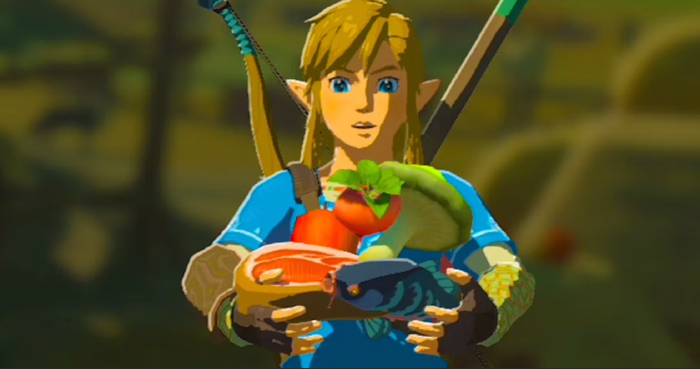
Image via Nintendo.
Cooking and worldbuilding
In-game cooking also serves a role in telling the player about the world around them, giving game designers, artists, narrative designers, and writers a powerful tool for crafting living and believable worlds.
Take, for example, Battle Chef Brigade, a match-3 game where recipes aren’t so much cooked as they are strategically assembled by collecting sets of the same ingredient. While the game doesn’t give any insight into the cooking process or what a recipe looks like, its core premise does rely on the aesthetic appeal of food, using the game’s combat sequences and the gathered ingredients of each “dish” to tell us key things about wildlife within its universe.
This use of cooking also frequently factors into open-world games, where its purpose as a performance booster is also supplemented by what it tells the player about the environment. In Breath of the Wild, plants reflect their region and in turn, create potions and meals that strengthen Link’s resistance to the most immediate elements. In Fallout 76, flora reflects not just the imagined effects on local vegetation in post-nuclear Appalachia but also the influence of pollution, geology, and other aspects of the area’s real history. Closely related to both is the world of potions that also dominates game lore, not just in RPGs and survival games but in other genres as well; in Hades II, the heroine Melinoe collects resources to produce Incantations at her camp’s giant cauldron, not only adding permanent beneficial boosts to the game but also supplementing key stories from Greek mythology to further explore the complicated relationships within its pantheon.
All these themes will be dissected in more detail through interviews, blogs, and features that highlight how cooking is used in games and why. Keep an eye out for these articles as the week progresses.
Q&A: Why Arctic Eggs are a dish best served cold
Featured Blog: Strategy games like Against the Storm let us think about the bigger picture of cooking
Deep Dive: Cooking up a palatable food prep experience in Fruitbus
Q&A: Good Pizza, Great Pizza would not exist if not for Costco
Featured Blog: This ain't your Sims 3 baked French toast
Feature: How Ore no Ryoumi inspired Cook, Serve, Delicious! An interview with David Galindo
Q&A: Exploring ancient Mexica culture through cooking in Cacao Café
And don’t forget, if you have a cooking-related topic you’d like to write out, reach out or submit a post through our blog submission form; we would love to feature your article during Cooking Week.
About the Author(s)
You May Also Like







.jpeg?width=700&auto=webp&quality=80&disable=upscale)








